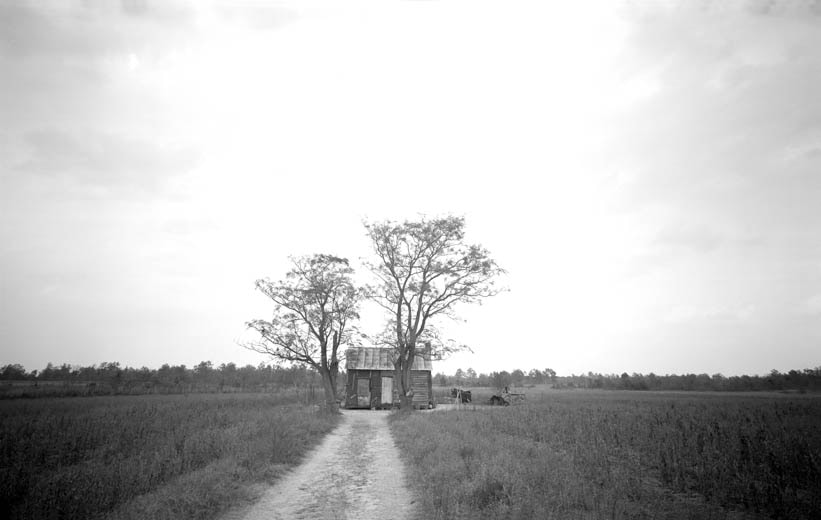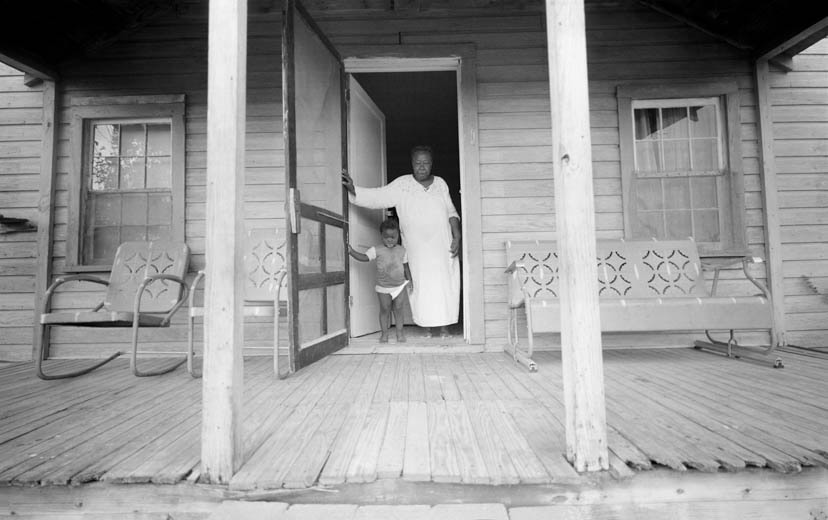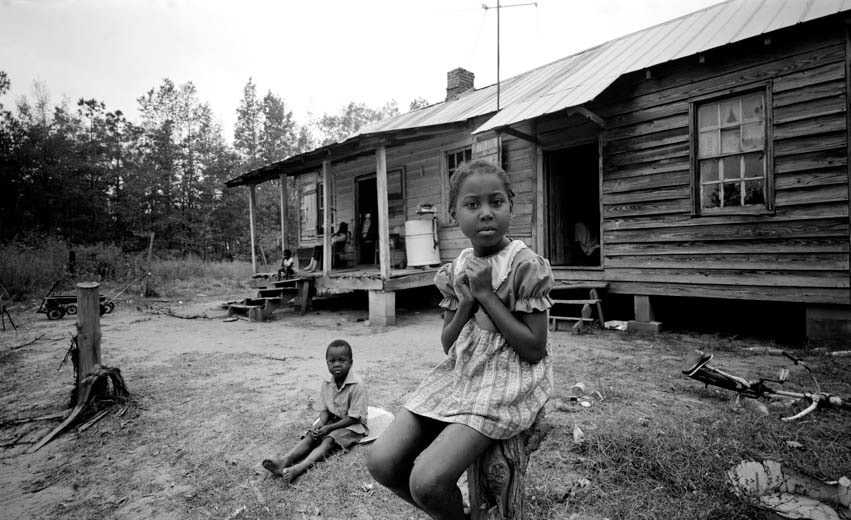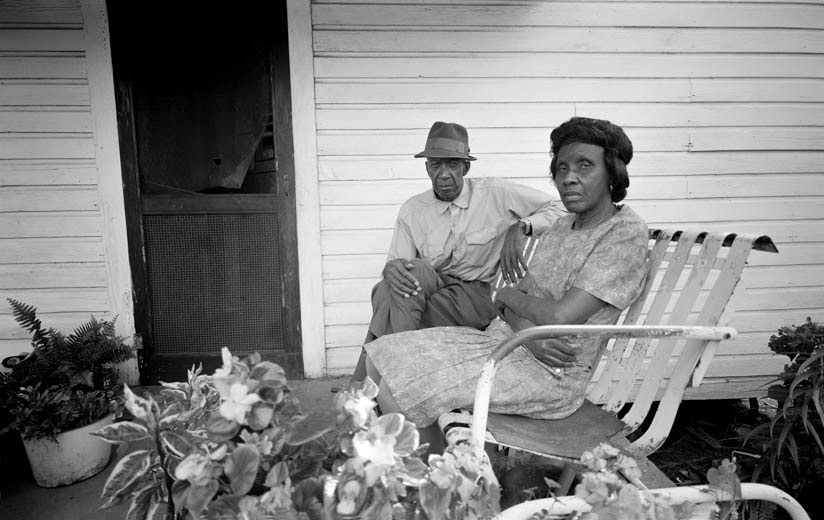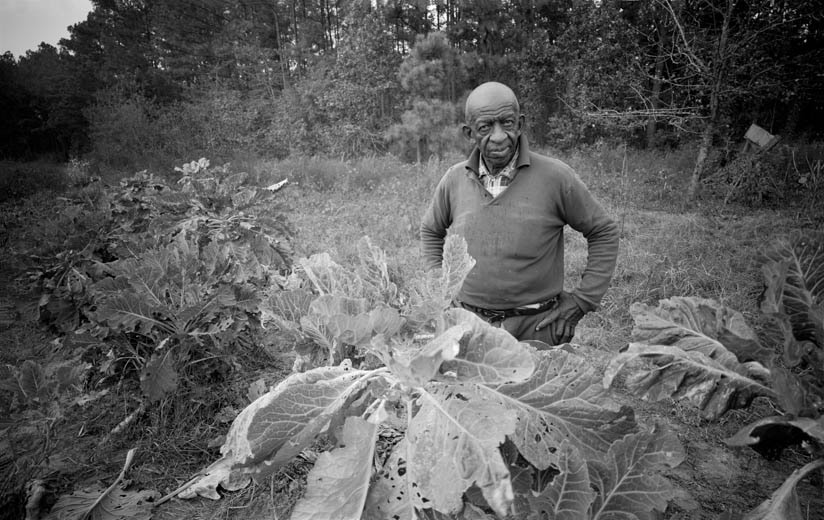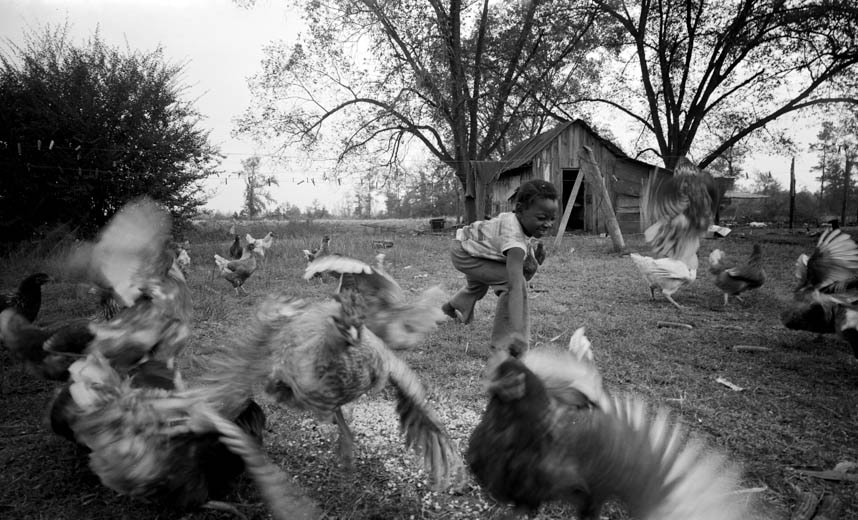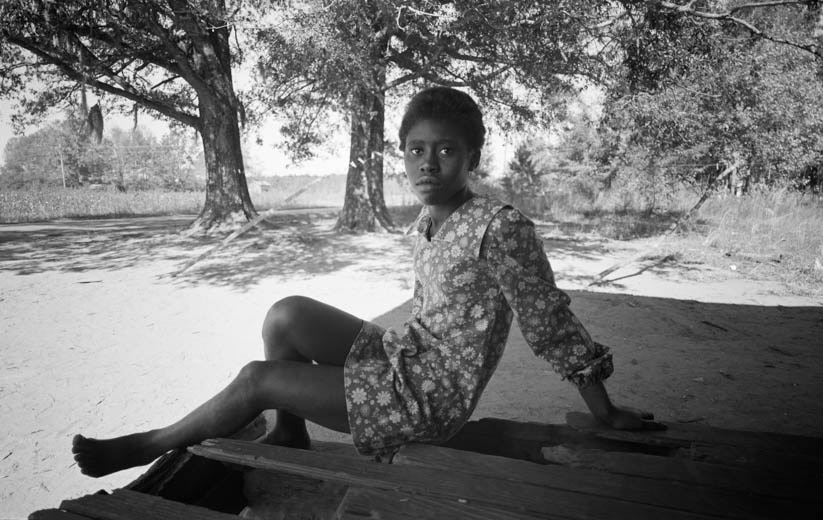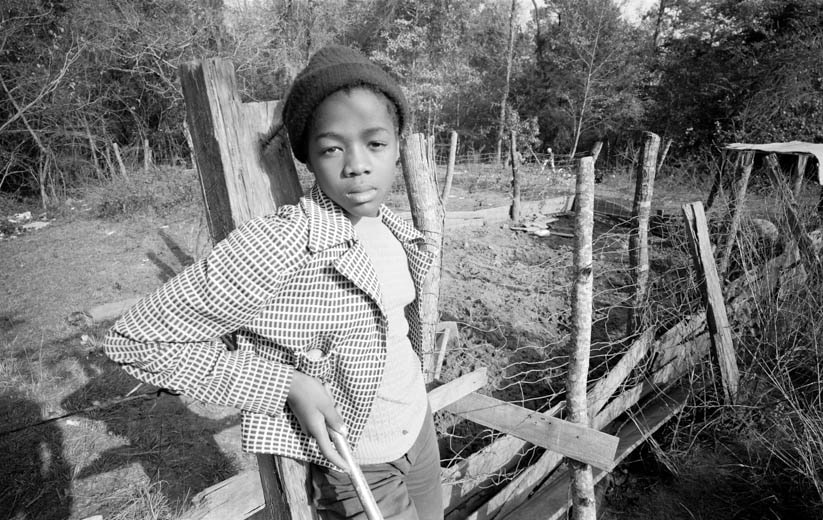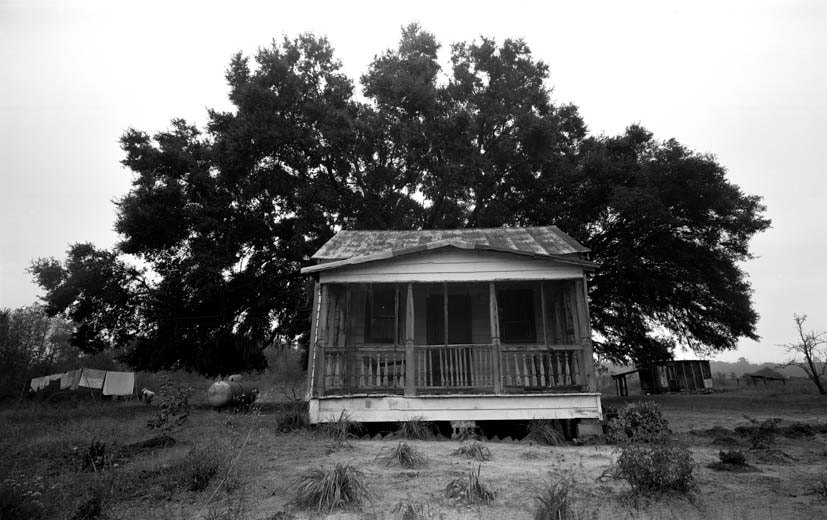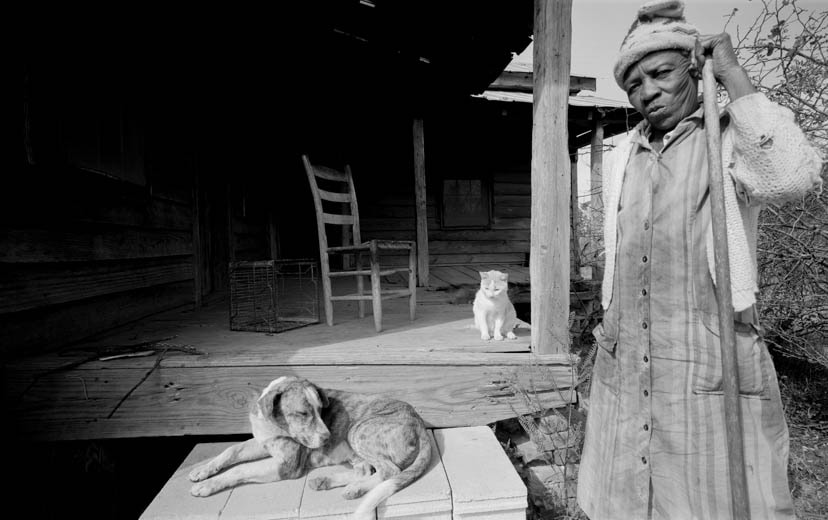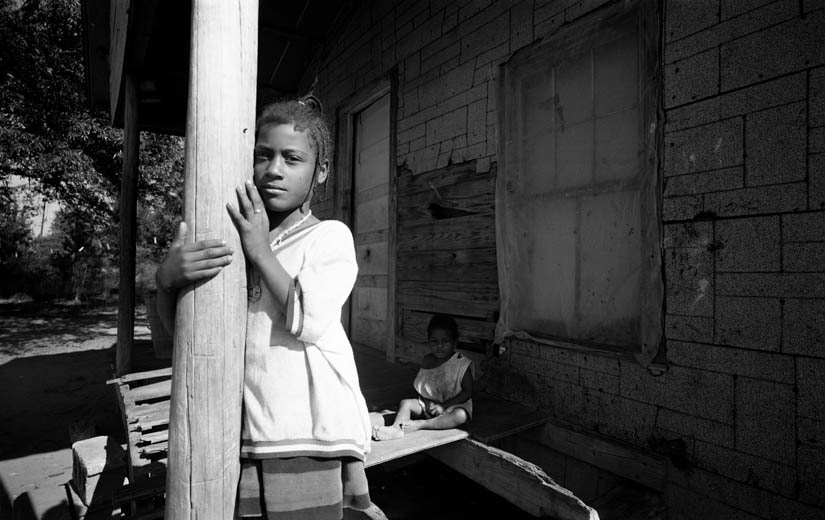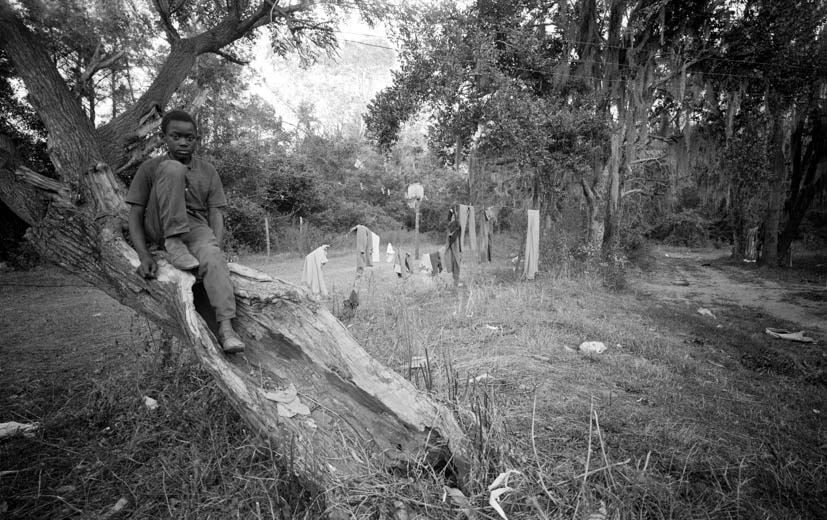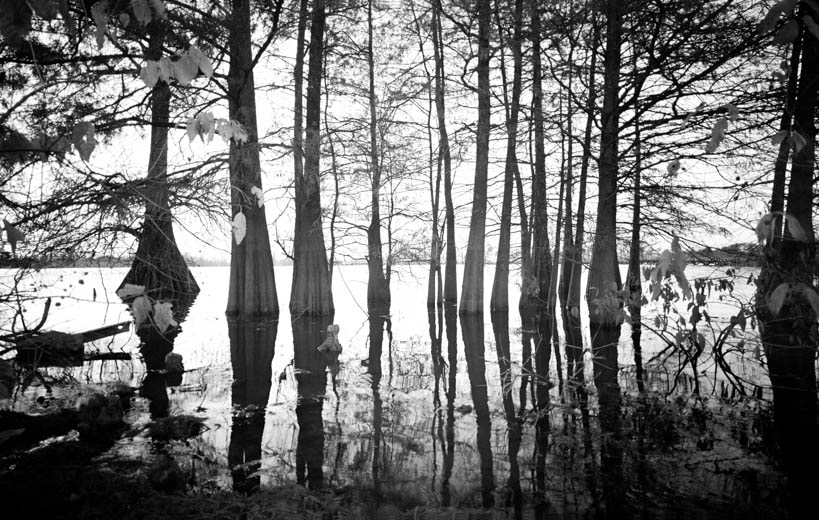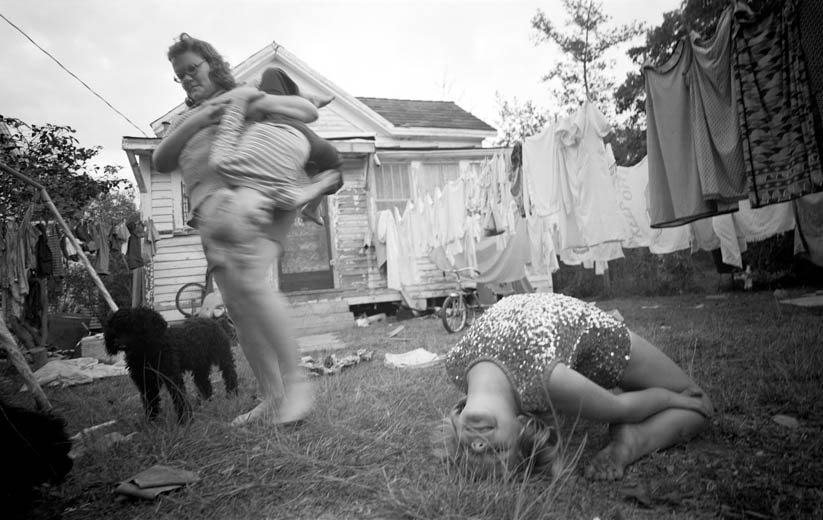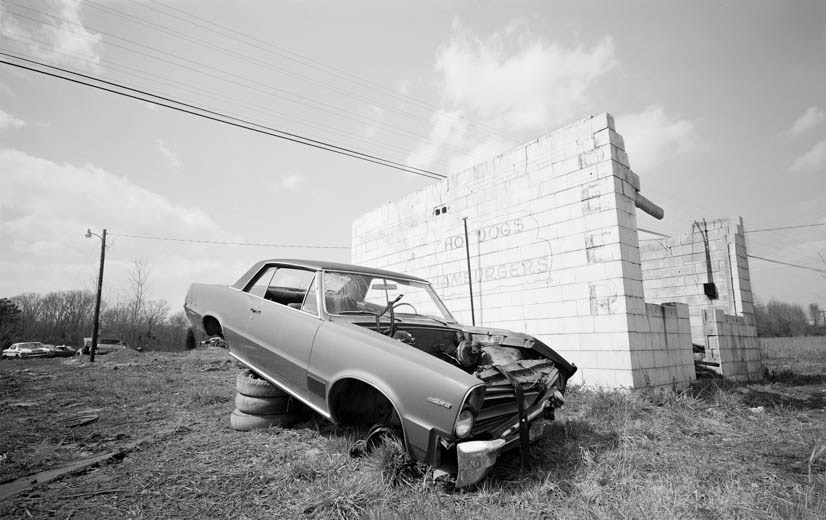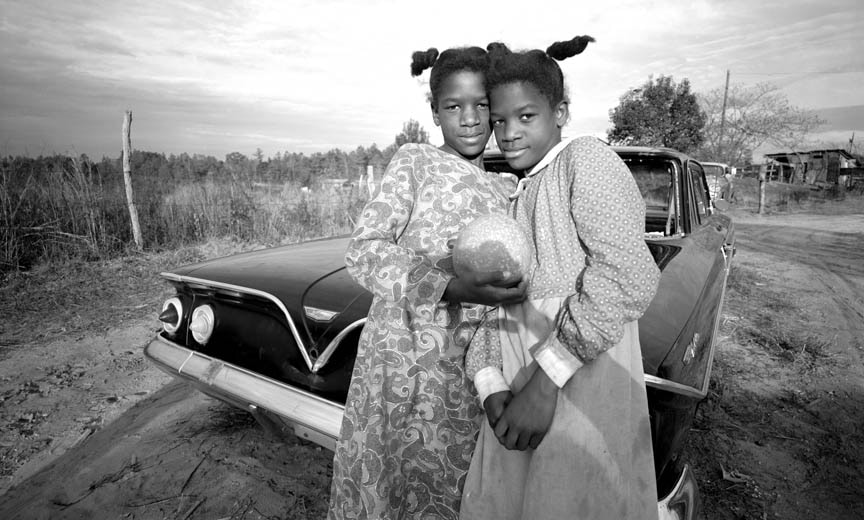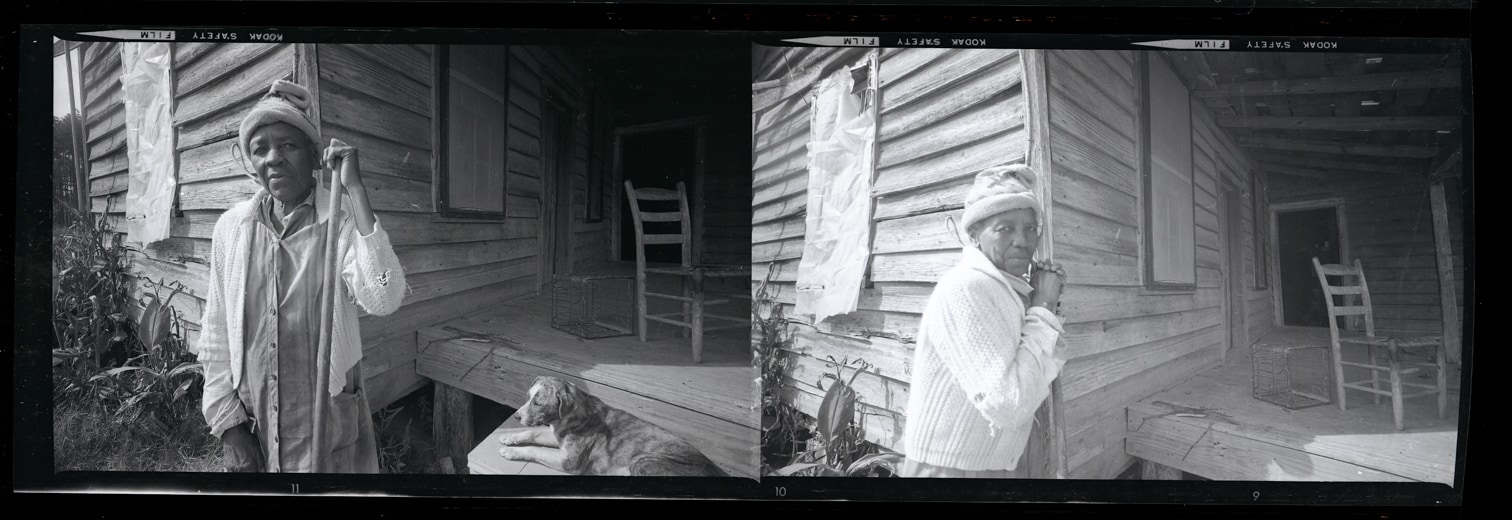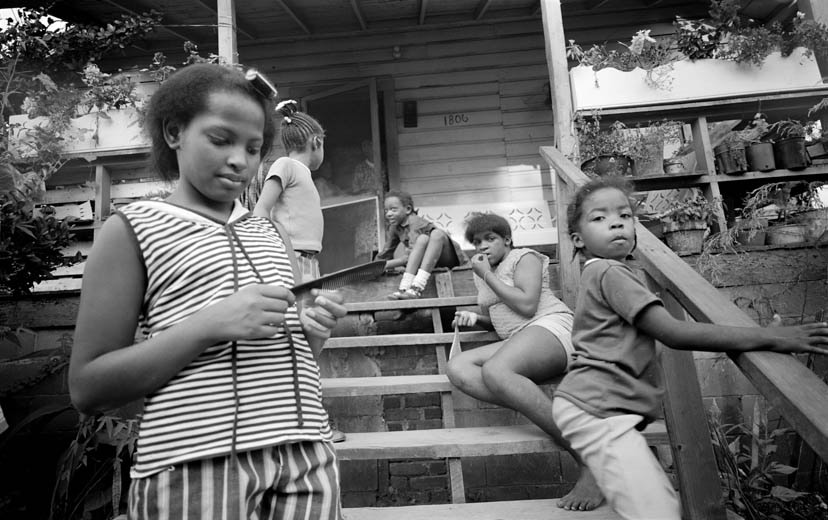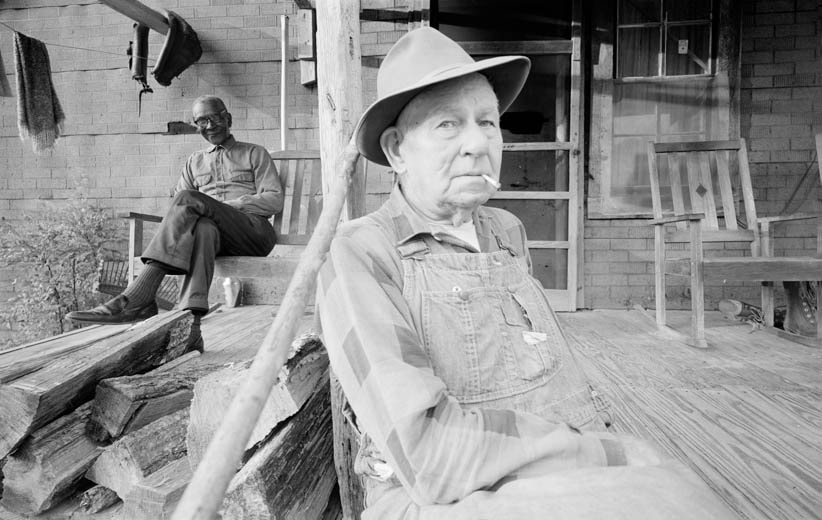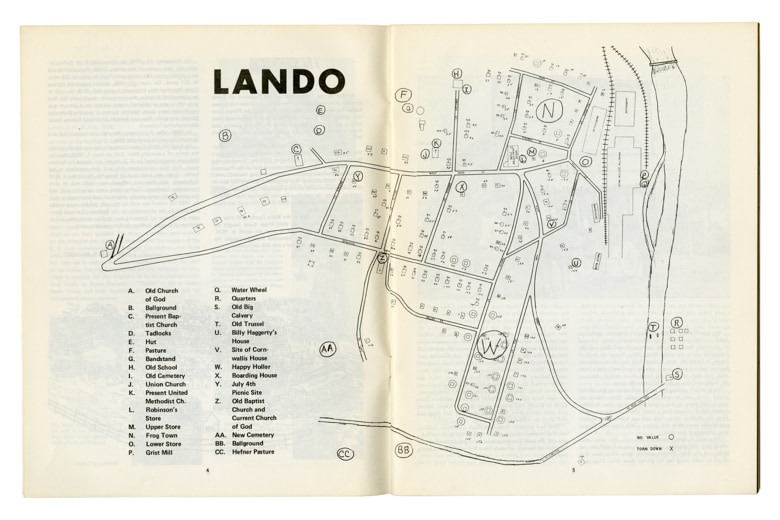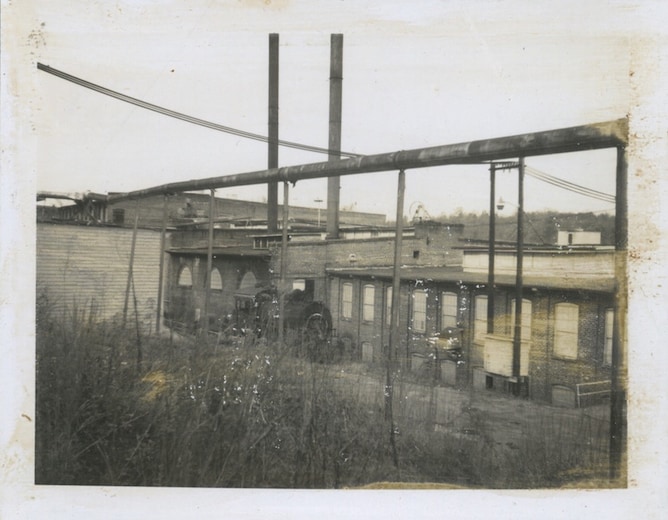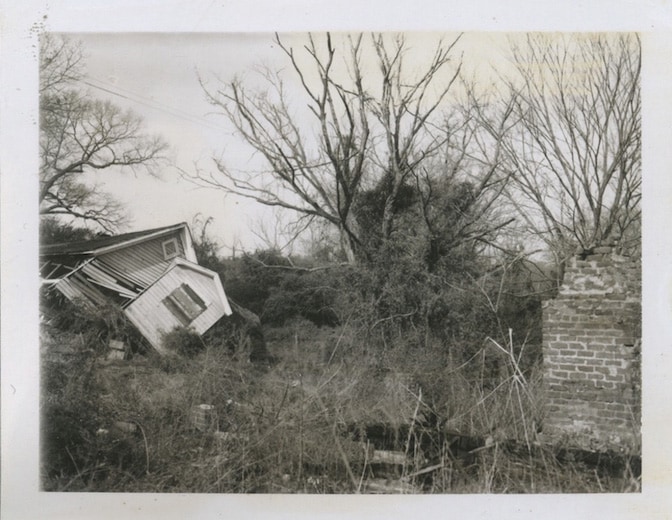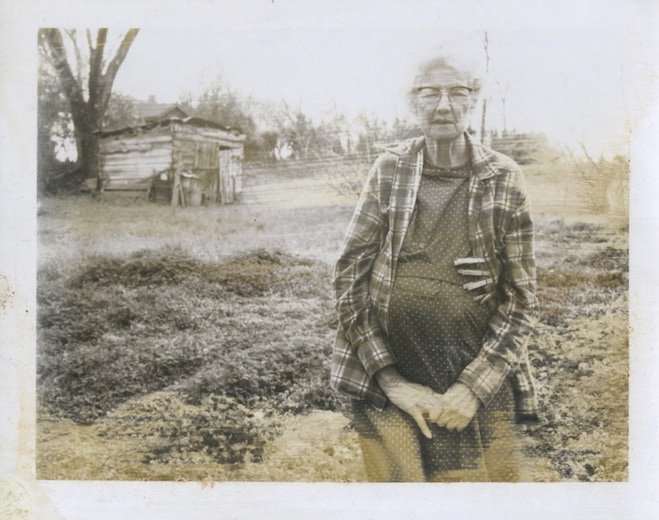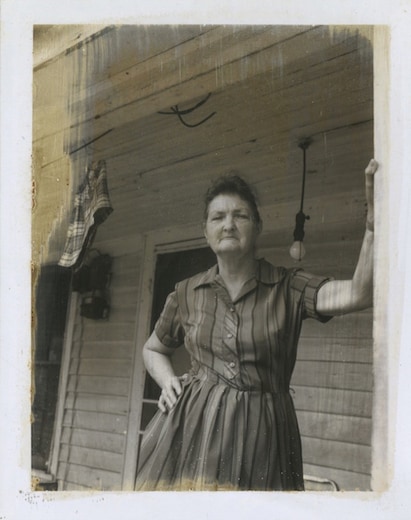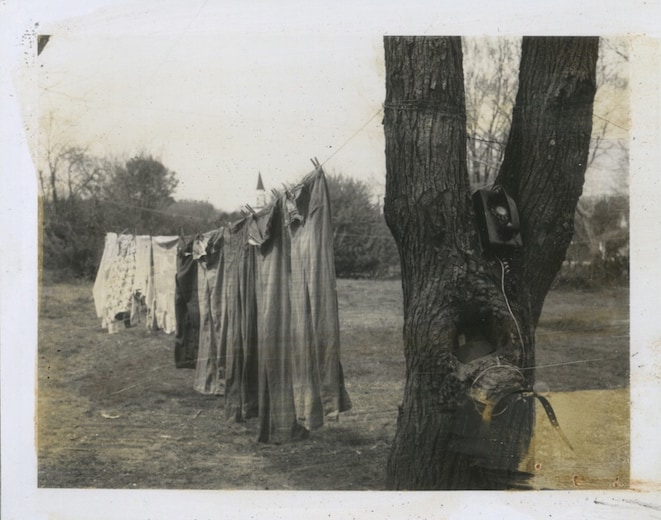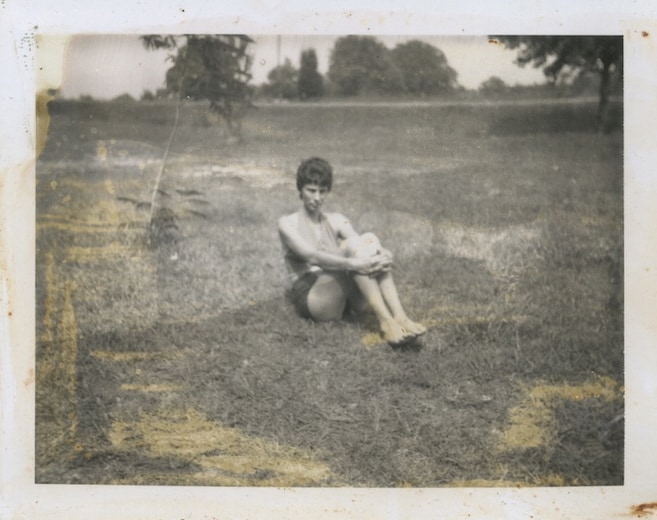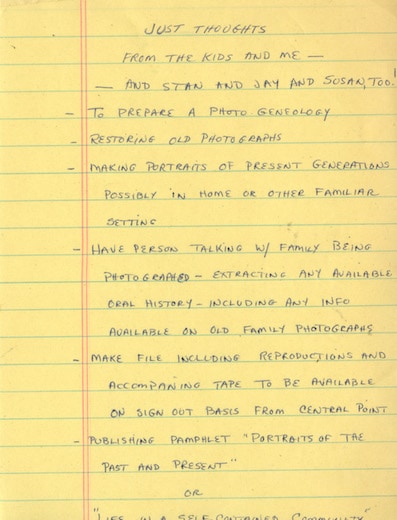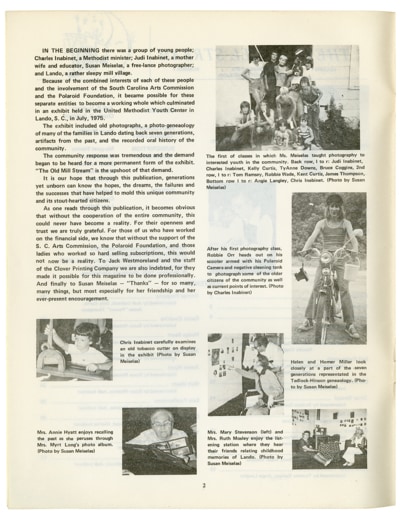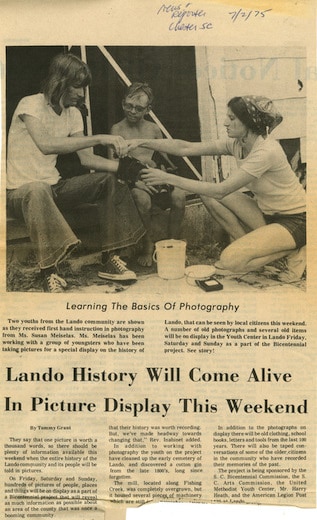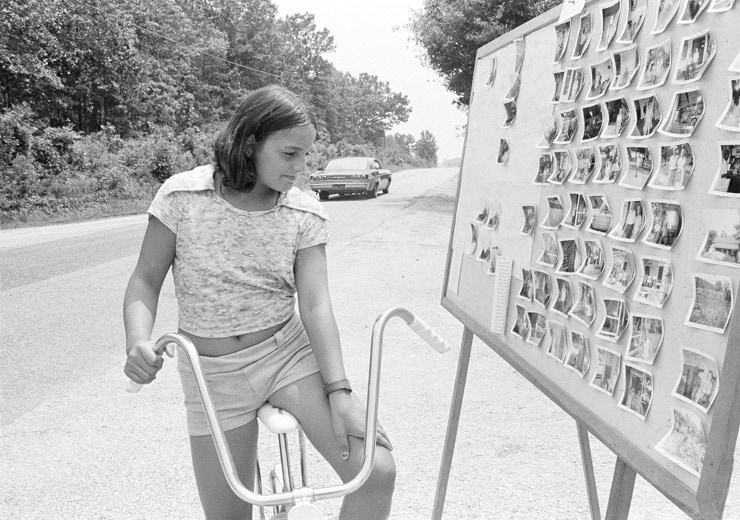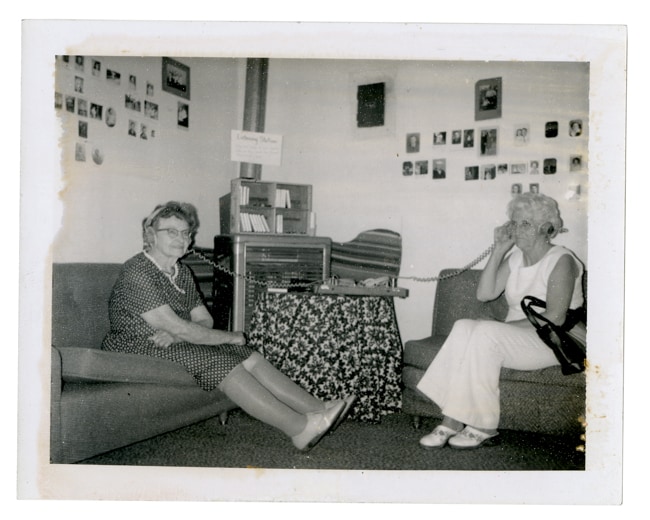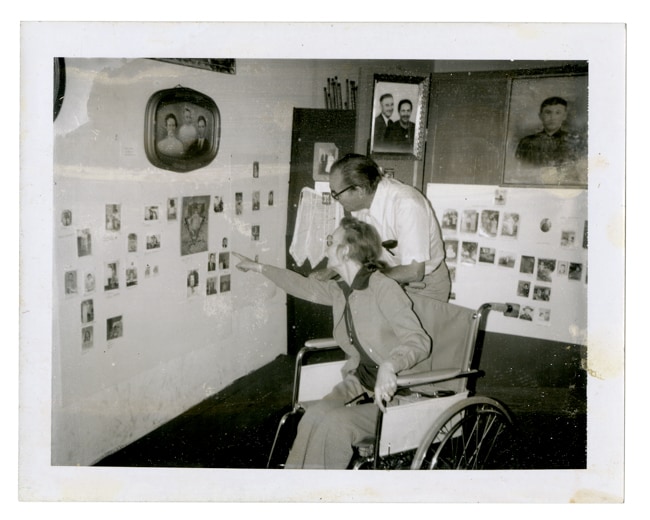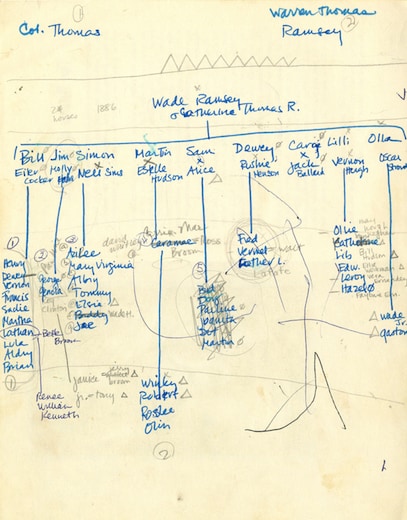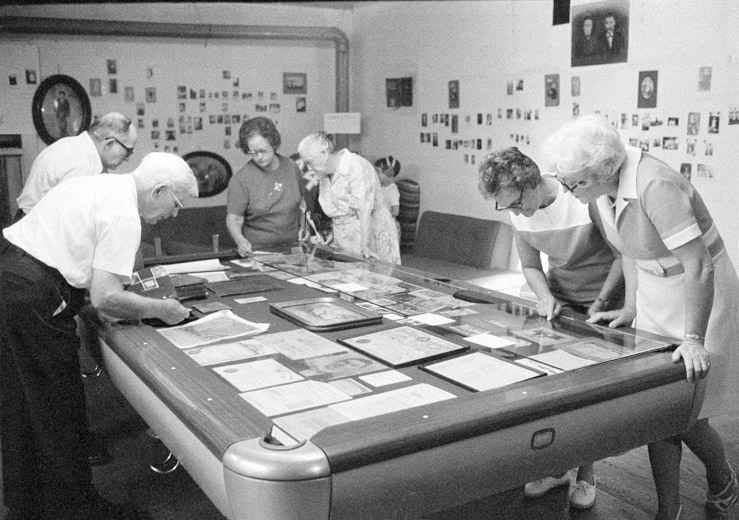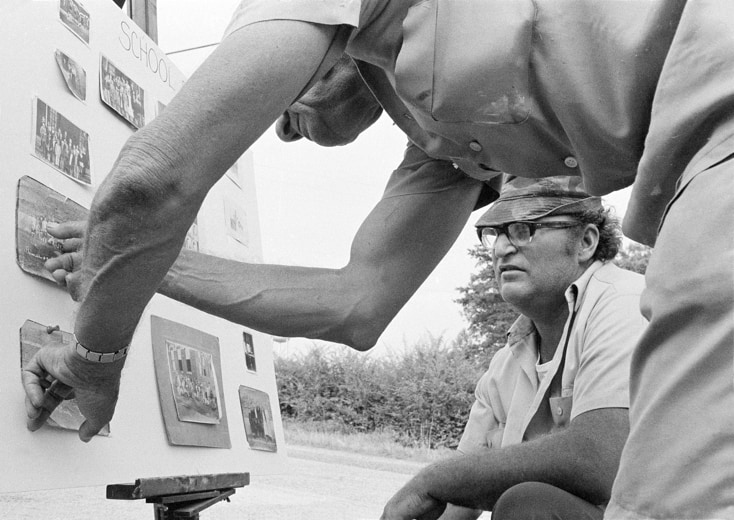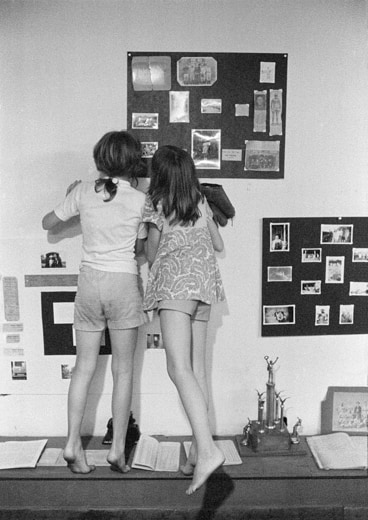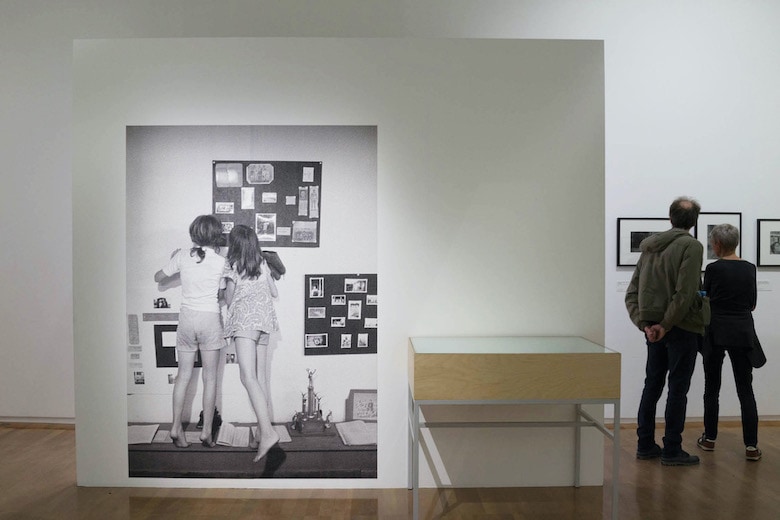American South
In the Porch Portraits (1974) series, Meiselas explored an area in South Carolina where she taught photography in an elementary school. Stepping across the invisible boundary between the road and the private properties, she took portraits of the people in front of their small wooden houses with open verandas.
Following this experience, she developed a community-based project in Lando, an old company‑owned mill town, to portray its multi-generational life through a “visual genealogy” of families living there. This project, the first in which Meiselas compiled an archive with the participation of a community, includes images from family albums and portraits of the inhabitants.- Kristen Lubben
Susan Meiselas: In History, 2008I would drive down a road, see a house, stop my car and hope that someone would open their door. I hadn’t planned what I would say. I began by explaining that I was teaching photography in the local elementary school, that I came from the North, and would like to take their photo. I didn’t really know why.
As my work has evolved, it’s rarely been focused on portraits. Portraits usually aren’t an expression of a sustained relationship. I often find them to be awkward and tense encounters.
I would see someone cooking with a big pot in the middle of their yard, or carrying sticks along the road, or I would see kids sitting on a porch. I had no idea what I’d say to them.
These photographs come from a time when tenderness was still possible. We could see each other, if only for a moment. Each exchange led me to make a picture and when I returned home I sent every family a print in the form of an enlarged postcard. That process was most important to me.
They had welcomed me to trespass. The postcard was simply a gesture to acknowledge that crossing we shared. I wonder now how their lives have evolved. Looking back at myself as a young white woman making this work leads me to rethink my own connection to the history of the South, which I knew so little about then.
Now, from a distance of more than 40 years, there are so many more questions that I wish I had asked, but maybe didn’t feel that I could.
- Susan Meiselas, May 2018
Lando, 1974-1975
When I first arrived in Lando, I was intrigued by this small town around a cotton mill which had already been closed down. At some point I met the local preacher and proposed to do a project with local teenagers; an idea of gathering an oral and visual history with them.
I began by making Polaroid pictures, then I taught the kids how to make pictures of their families and neighbors. They would photograph and then collect stories of how families had originally come to Lando, who in the family had left, and what had happened to them. Then we started collecting their family photographs.
The show was held in a small community center. The photographs were hung around the pool tables and on the walls, and we brought the oral histories together into listening stations. This is how the town celebrated the Bicentennial.
Mediations at Jeu de Paume
Paris, February 2018
